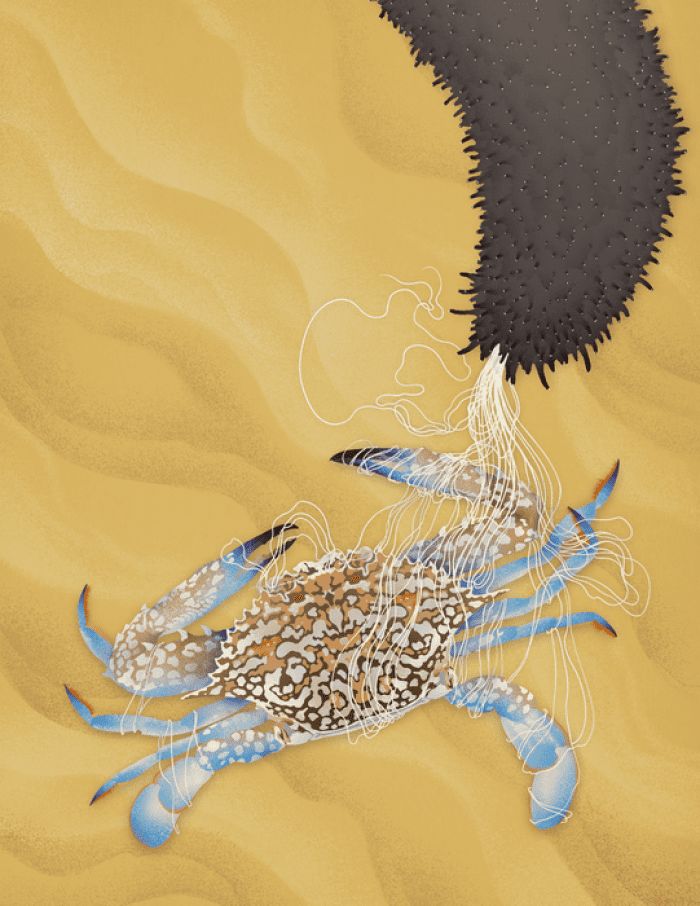Ghostly white tendrils exploding out the rear end of a sea cucumber might look like a horrible parasite infection to the uninitiated, but those trained in the ways of Holothuriidae know it’s a trap. When under threat, sea cucumbers unleash a defensive organ that’s sacrificially ejected to repel or fatally ensnare predators. Now, new research has taken a closer look at this peculiar organ to find out what makes it such an effective defense.
French zoologist Georges Cuvier was the first to describe the Cuvierian organ (CO) that’s ejected by sea cucumbers under threat. Since then, the genetic underpinnings for the morbid party trick have remained unclear, but this new research carried out a chromosome-level genome assembly study of the sea cucumber Holothuria leucospilota to find out.
Using electron microscopy, they were able to pinpoint fibrous proteins in the CO’s connective tissue that could account for why it’s so effective at entangling and ensnaring predators. This was backed up by genomic analysis that revealed the membrane proteins contain long, tandem-repeats, a trait seen in the proteins of spider and silkworm silk.

Illustration of a tropical sea cucumber (H. leucospilota) expelling its Cuvierian organ to ensnare a potential predator. Image credit: Liang Li
As for how it explosively expels out of the sea cucumber, poking these animals revealed that the application of physical pressure is enough to trigger the CO that spills out through an acetylcholine-regulated molecular pathway. The genetic analyses also revealed that the CO probably arose from respiratory tissue that specialized to become the whispy defensive organ it is today.
All in all, it seems there are two key parts to H. leucospilota’s genome that are to thank for the peculiar defensive strategy.
“Evolutionarily, innovative events in two distinct regions of the H. leucospilota genome have apparently spurred CO’s differentiation from the respiratory tree to a lethal defensive organ against predators,” concluded the study authors.
Sea cucumbers firing out their internal organs in this way is known as evisceration, and which end it comes out of depends on the species. For some, it’s the head, and in others, it’s the butt.
Sea cucumber butts are fascinating things, capable of turning over enough of the seabed to see “walking colon” Holothuriidae dump five Eiffel-tower’s worth of poop per coral reef annually. They’re also the opening through which sea cucumbers breathe, so their anal sphincters are constantly opening and closing to bring oxygenated water into the rectum.
This opening and closing has come with the side effect of many species becoming shelter for pearlfish who see sea cucumber rectums as prime real estate. While some species treat sea cucumbers like literal hotels, evidently the CO tells us these orifices are not to be treated lightly.
Beware the Holothuriidae’s ass grass.
The study is published in Proceedings of the National Academy of Sciences.
Source Link: Sea Cucumbers Kill Predators By Firing Sticky Organs Out Their Butts